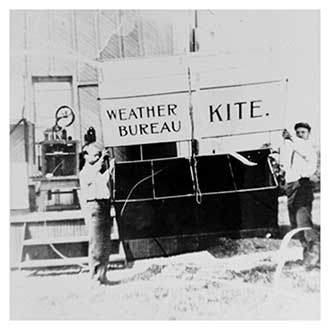Working Kites
Kites have a long history of working alongside their playing counter-parts. In addition to kite fishing and sailing. Kites have helped contributed to the world’s progress.
The first recorded weather experiments with kites were in Scotland in 1749 by two University of Glasgow students. Wondering if the air above the ground was colder or warmer than the air on the ground. The Scottish scientist required a controllable flying machine for their experiments, and since it was 30 years before the first balloon flight, and 150 years before the aeroplane, a kite flew to the rescue.
Benjamin Franklin followed in 1752 with his electrical experiments. Kites continued to help scientist through-out the Age-of-Reason, into the Industrial Revolution, and continue to this day.
Today’s working kites have varied duties. Kites collect air samples from above nuclear power plants in France. KAP also known as Kite Aerial Photography was used to photograph and monitor the disastrous 2010 BP oil spill in the Gulf of Mexico. Maps of current day Romania are being produced via KAP.
Professors from Boulder University use kites to record the thousands of bats that fly out of caves each night at dusk along the Texas/Mexico border. Farmers rely on the bats for pest control around their crops.
Today’s most exciting and promising kite work is researching renewable energy. The air streams and under water currents are more reliable, and steady both under water and high up in the upper atmosphere

